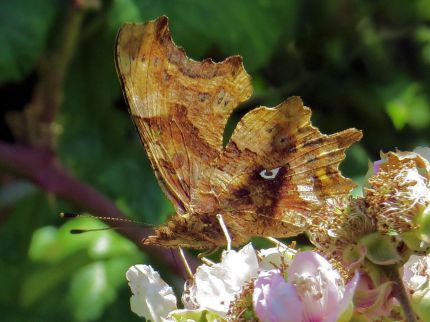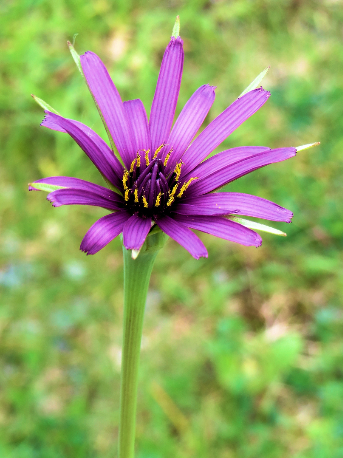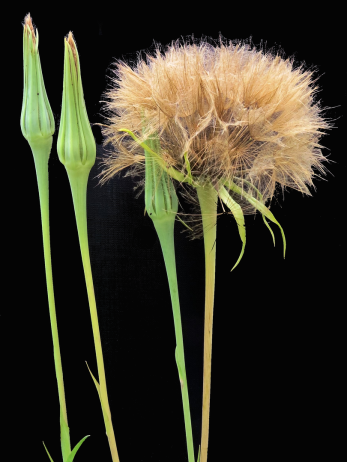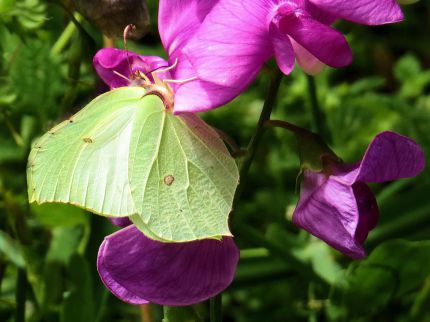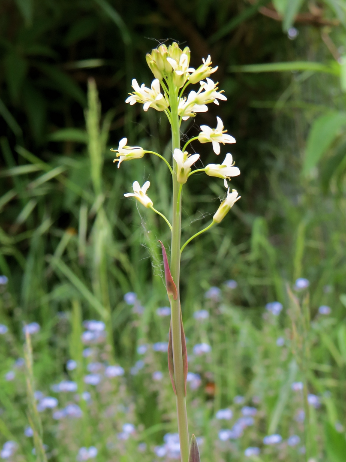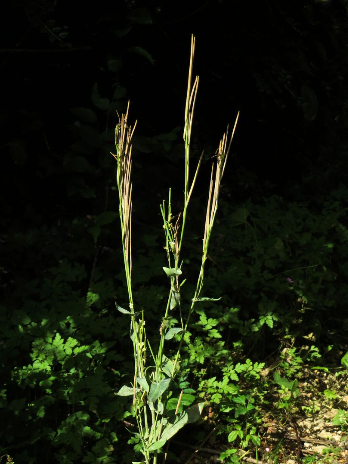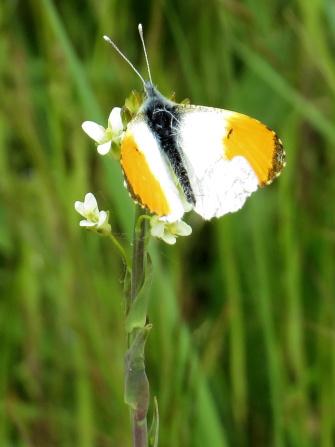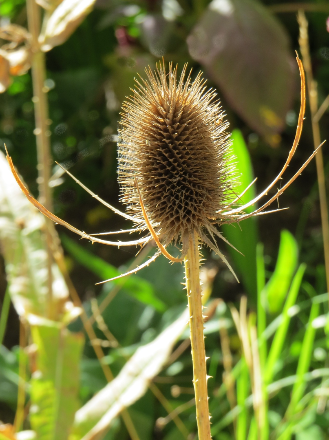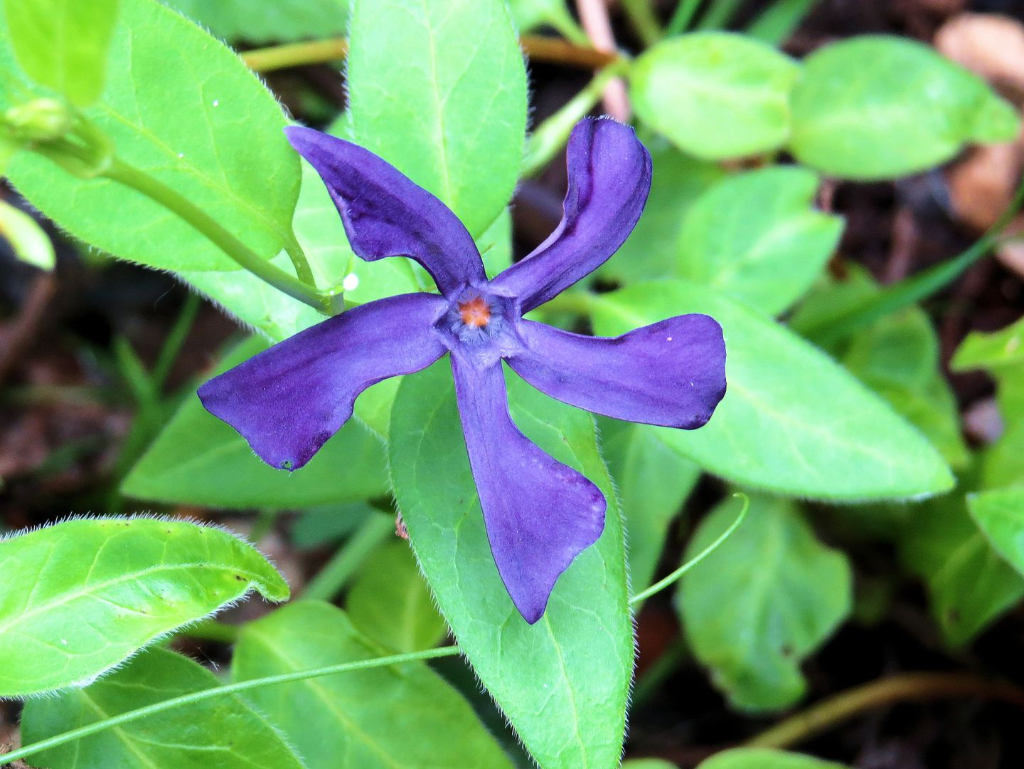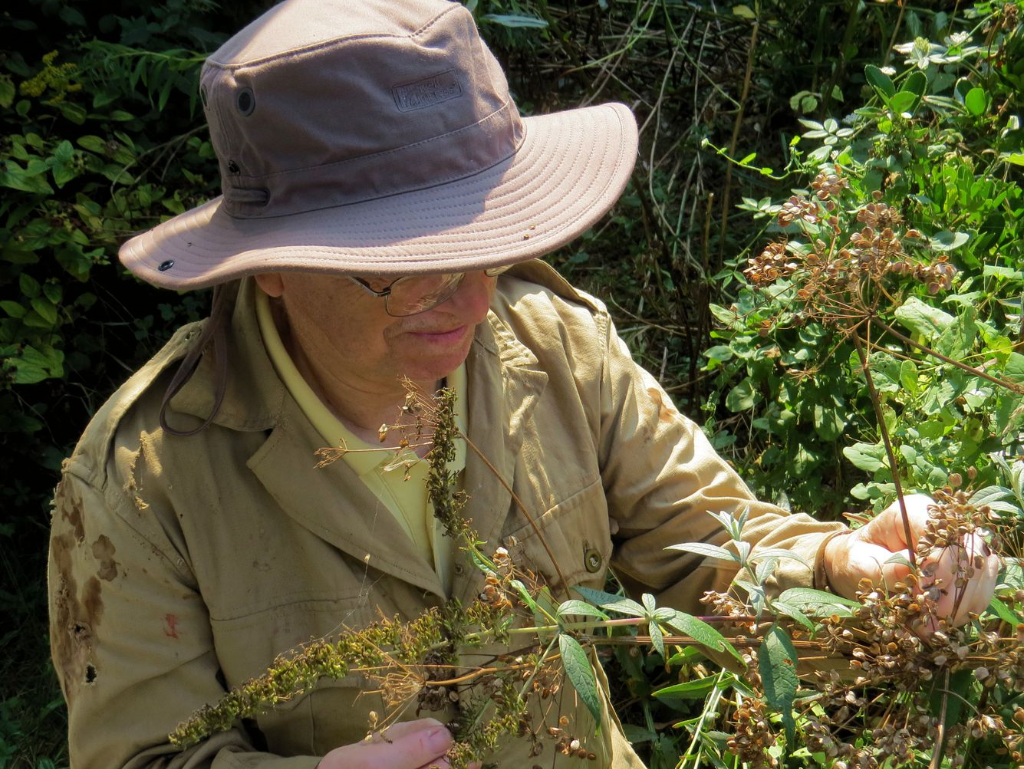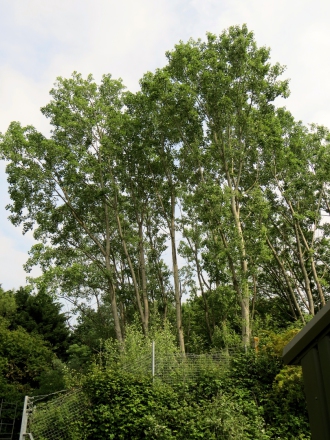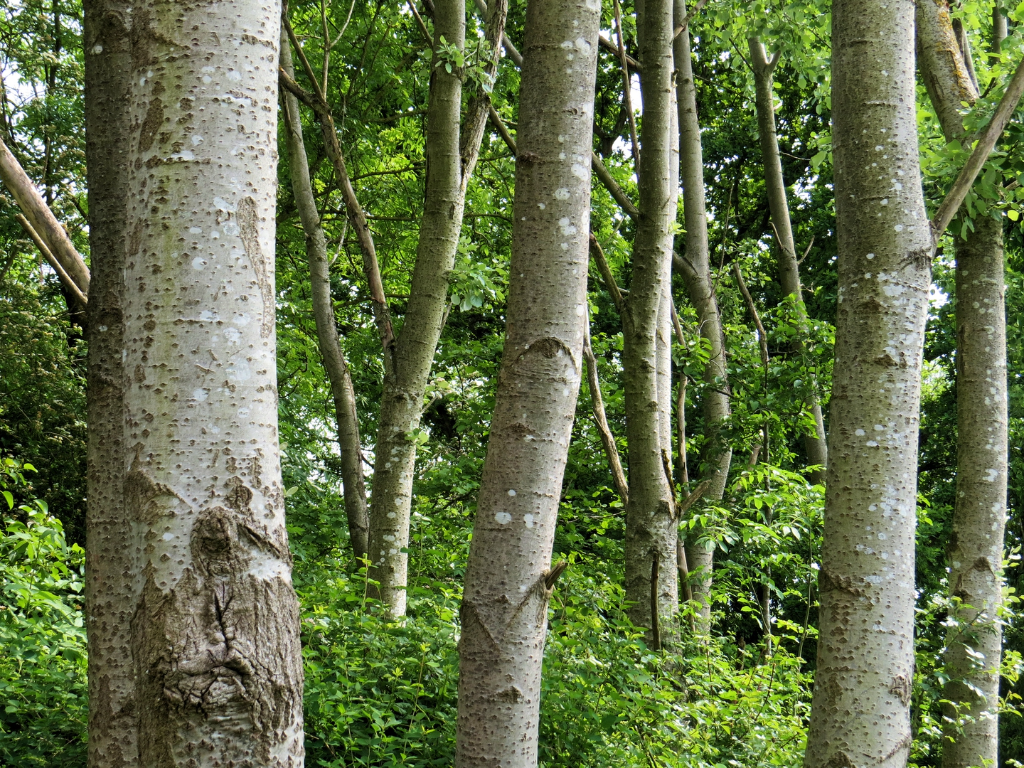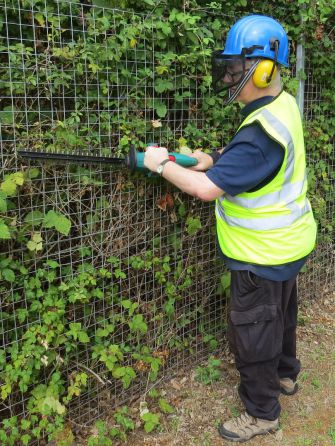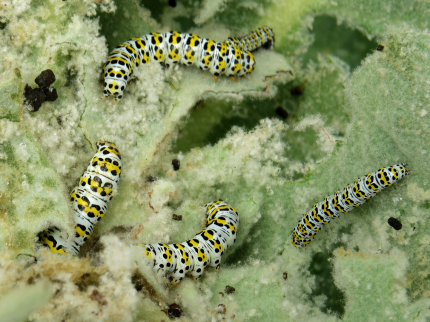
Museum Gardens
Another aspect to the Museum of Berkshire Aviation is its small yet highly diverse wildlife garden. It’s actually a mixture of wild plants with some cultivars donated by the volunteers. Tony tends the garden by retaining a natural ambience by largely allowing the garden to tend itself. There are some nice gems in the garden. Peter mows the lawns and trims vegetation around the fences. I sometimes help out but they seem happy enough working alone.
Oriental poppy
Papaver orientale ‘Papillon’
Oriental poppy in early June
A perennial flowering plant native to the Caucasus, north-eastern Turkey and northern Iran. Oriental poppies grow on long stems covered profusely with curly leaves that dies away after flowering. This is to allow the plant to survive the summer drought of Central Asia. Fresh leaves appear with autumn rain.
Oriental poppy buds in mid-June
Oriental poppies are related to the great scarlet poppy papaver bracteatum, which can be grown for the commercial extraction of thebaine, a main source for the legal synthesis of opiates. Oriental poppies, however, does not produce any narcotic alkaloids such as morphine or codeine.
Peter using the strimmer. At least I think it’s Peter.
Hard to say at this distance.
Common Blue Damselfly
Ebllagma cyathigerum
A highly prolific damselfly occurring around rivers, lakes, marshes and bogs and occurs throughout the British Isles. Incidentally, damselflies can be told apart from dragonflies because they fold their wing at rest whereas dragonflies, hawkers and darters keep their wings open.
Male common blue damsel in late June
On the male segment two has a mark of a spot linked to the inter segment suture by a short line. Segments eight and nine are entirely blue.
The female occurs in two colour forms, one blue, as in the male, the other dull green. The mark on segment two is thistle shaped and there is a ‘Christmas tree’ shaped stepped triangle on segment eight. They often perch on plant stems.
Female Common Blue Damselfly on an Oriental poppy bud in late June.
During mating, the male clasps the female by her neck while she bends her body around to his reproductive organs. It is called a mating wheel but actually forms a charming heart shape. The pair fli together over the water and eggs are laid on a suitable plant, just below the water-line.
The eggs hatch and the larvae, called nymphs, live in the water and feed on small aquatic animals. Nymphs climb out of the water up a suitable stem to moult into damselflies.
Length: 32mm
Flight Period: April – September/October
Comma
Polygonia c-album
The cryptic colouring and exaggerated shape of the wings of the comma resemble dead leaves, a favoured hiding place for adults. The larvae flecked with brown and white may look like bird droppings. The comma was in severe decline but managed recover and is now widespread in southern Britain. Its range is expanding northwards.
The favoured food plant of comma caterpillars is the common nettle and other species used include hop, elms, currants and willows.
Wing Span: 55-60mm
Common or purple salsify
Tragopogon porrifolius
Purple salsify in late May
Cultivated for its ornamental flower, edible root, and herbal properties, Tragopogon porrifolius also occurs in the wild. It is native to Mediterranean regions of Europe but has been introduced into northern parts of Europe, central and southern England, North America, Australia and southern Africa.
Purple salsify in mid-June
The stem grows to about 120cm in height and is usually single stemmed with grass-like leaves. The flower head has sixteen petals in two layers about 5cm in diameter. Under the petals are eight green bracts. The flowers close about midday and don’t open on dull days. The root is used as a vegetable in parts of Europe and Russia. In the UK it was used as a vegetable in the 18th century but has fallen out of popularity.
Brimstone
Gonepteryx rhamni
The Brimstone has spread in recent years, mainly in northern England. The males have yellow upper wings with yellow-green underwings. The wings of the female are a paler green, almost white. When the brimstone roosts among foliage, the angular shape and the strong veining of their wings can closely resemble leaves.
Eggs are laid late May to early June. There is a short period as caterpillars then chrysalis before adult hood during September. Preferred habitats are scrubby grassland, woodland and hedgerows. The larvae feed on leaves of buckthorn, and alder buckthorn.
Wing Span: 60mm
Tower rockcress
Arabis turrita
Tower rockcress Arabis turrita late May
Tower rock cress is a plant native to the southern half of Europe having erect woody stems. It occurs in Britain but is very rare.
Tower rockcress Arabis turrita mid-September
It prefers forest edges and clearings in stony or rocky soils. It grows from 45-95cm tall and a small cluster of white flowers of four petals are produced at the top of the stems from April to May.
Information signs for Tower Rock Cress
Being such a special plant we decided to create a sign to place by tower rock cress.
I took some photos of the plant aat different times of the year and wrote the text with Tony’s help. I printed on card and laminated it. I made the brackets from 6mm round section steel rod as to shape and painted with Hammerite black. The sign was fixed using cable ties and tie pads.
Gary taking a break from whatever it is that he does
Orange-tip butterfly
Anthocharis cardamines
The orange-tip is a sign of spring and is one of the first species emerge that has not overwintered as an adult. The male forewings have orange tips and hence the name but the female lacks this colour feature. Both sexes have a pattern of blotches that appear green but are actually formed by a combination of yellow and black scales. When at rest on a flower head with its wings closed, the orange-tip is very well camouflaged.
Male orange-tip butterfly on a tower rock cress
The male is generally more active than the female as it flits from plant to plant and may fly for longer periods without rest. The female, being more concerned with egg-laying, and is usually found around food plants. The orange-tip occurs throughout England, Wales and Ireland but is more localised in Scotland. It has a wide range of habitats which include hedgerows, riverbanks, woodland margins, damp meadows and gardens. There is a single brood each year and the eggs are laid singly on separate flower stalks. This is because the larvae are cannibalistic.
Wingspan 45mm
Flight Period: April – June
Teasel
Dipsacus fullonum
Dipsacus are native to Europe, Asia and northern Africa, the most common in Britain is Fuller’s teasel (dipsacus fullonum) which grows to at least 1-2m tall.
The ovate seed head is very popular with goldfinches in the autumn and winter and teasels are often grown in gardens and encouraged on some nature reserves to attract them. Teasels are grown as ornamental plants, and the dried heads are used in floristry.
Teasel Dipsacus mid-September
The dried flower heads of Fuller’s teasel were attached to spindles, wheels or cylinders providing a natural comb to raise the nap on fabrics especially wool. By the 20th century, teasels had been largely replaced by metal cards, which and do not need to be constantly replaced as the teasel heads wear.
Periwinkle
Vinca major var. oxyloba late May
Periwinkle late May
Greater periwinkle is an evergreen perennial plant growing naturally in western Mediterranean countries. It grows up to 25cm tall and spreads indefinitely making it popular for use as ground cover. Its flowers usually have five petals but six petals may also occur but are quite rare.
Red Admiral
Vanessa atalanta
Red admirals are widespread and can be found in almost any habitat from woods, parks, gardens to the seashore and the tops of the highest mountains and anywhere in the British Isles, including Orkney and Shetland. Adults can be seen throughout the year but there is an increase during May and June as migrants arrive from the continent.
Red admirals on buddleia
The adults feed on nectar from a number of sources including buddleia, ivy blossom and bramble. They are also partial to rotting fruit such as windfall plums.
A red admiral on a Gannet propeller blade
Eggs are laid singly on the upper surface of a leaf of the food plant and several eggs are often laid in the same nettle patch. They are light green at first, but turn darker as the larva develops. Eggs hatch in about a week.
Wingspans: Male 64-72mm, Femle 70-78mm
Tony hiding in the garden
Foxglove
Digitalis purpurea
Foxglove Digitalis purpurea late May
The scientific name digitalis means finger-like referring to the shape of the flower. In the second year the flowers grow from a spike 50-250cm tall and can vary in colour from purple, pink, white or yellow depending on the species.
Foxglove flowers are white for a few days before turning purple
The best known species is the biennial digitalis purpurea. Foxgloves prefer acidic soil in partial sunlight to deep shade in open woods moorland margins, sea cliffs, rocky mountain slopes etc.
Downy birch
Betula pubescens
This copse of downy birch is just outside the grounds near to the Gannet. Photo taken May 2016
Downy birch is a species of deciduous tree native to northern Europe, northern Asia, Iceland and Greenland. It typically grows to about 20m with a girth of 2m although it can sometimes grow to 27m with a 3m girth. The flowers are catkins pollinated by the wind and are produced in early spring before the leaves come out. The fruit are a pendulous collection of cylindrical shapes 1-4cm long and 5-7mm in diameter. They disintegrates at maturity releasing the individual seeds. They are 2mm long with two small wings along the side.
Downy birch bark May 2016
Downy birch can be confused with the closely related silver birch (betula pendula). The downy birch has a dull grey smooth bark with thin horizontal fissures. The silver birch has a striking white bark with large black random fissures. The leaves are ovate with fine serrated edges whereas the silver birch leaves are more heavily serrated. The downy birch thrives in wet peat bogs but silver birch prefer drier sandy soils.
The same downy birch early November 2016
The downy birch can also be confused with the dwarf birch (betula nana) especially in Iceland where the species sometimes combine to form hybrids. The larva of the autumnal moth (epirrita autumnata) feeds on the foliage of downy birch along with other tree species. In outbreak years, large areas of birch forest can be defoliated by this insect.
A very Health & Safety conscious Gary not wearing gloves
Mullein moth caterpillar
Cucullia verbasci
Alternative name: Shargacucullia verbasci
Mullein moths are found in western, southern and central Europe and North Africa. In the Alps, it rises up to a height of 1,600m. The eastern range extends to Turkey, Israel and western Afghanistan.
Preferred habitats include dry and warm places such as scrub, dry grassland, rocky slopes, and parks and gardens. Host plants include Buddleja (butterfly bush); Himantoglossum hircinum (lizard orchid); Scrophularia (figworts); and Verbascum (mulleins).
Eggs are laid singly on the under-surface of leaves of host plants. The larva which is creamy with black and yellow spots.is the most likely to be seen stage of the life cycle. Larvae will completely strip the leaves of the host plant and can be a horticultural pest. Adults are generally dull brown.
Length of larva: 44-48mm
Acknowledgements
Many thanks for the help, support and guidance on this and other articles within this website to the Museum of Berkshire Aviation. For the latest information, opening days, times and the location of the museum, visit the homepage of their website by clicking on the button below:
Information contained in these pages is correct as of 2018
My name is Gary Flint. I'm author, photographer & illustrator for Postcards from Slough. If you wish to make any comments on the contents of the website please click on the ladybird below:
Gary Flint
08/03/1961 - 09/04/2019
Postcards from Slough is an independently funded website. We are open to offers of sponsorship from companies that have any connections to the town. To contact us please click on the ladybird below:
Chalvey Community Forum
Postcards from Slough is linked with a local action group the Chalvey Community Forum. The group liaises with various local organisations in order to improve the quality of life for residents in the ward of Chalvey and Salt Hill. To learn more please click on the maidenhair leaf below:
Museum of Berkshire Aviation
I volunteer as a guide at the Museum of Berkshire Aviation. It is a special museum and if you would like to know more about the museum then please click on the motif below:
To learn more about the museums activities while staying within this website click on the tab at the top of the page or on the motif below:
Graces Guide
Postcards from Slough uses some images from Grace's Guide. Click on the button below:
British Listed Buildings
Postcards from Slough contributes material to British Listed Buildings and uses the site for cross referencing purposes. Click on the button below:
